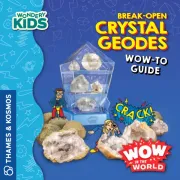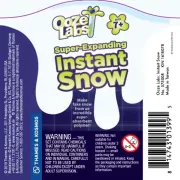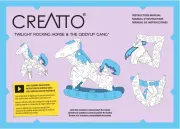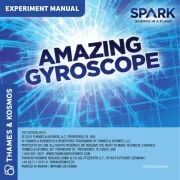Thames & Kosmos Nanotechnology Handleiding
Thames & Kosmos
Niet gecategoriseerd
Nanotechnology
Bekijk gratis de handleiding van Thames & Kosmos Nanotechnology (4 pagina’s), behorend tot de categorie Niet gecategoriseerd. Deze gids werd als nuttig beoordeeld door 2 mensen en kreeg gemiddeld 4.3 sterren uit 1.5 reviews. Heb je een vraag over Thames & Kosmos Nanotechnology of wil je andere gebruikers van dit product iets vragen? Stel een vraag
Pagina 1/4

E X P E R I M E N T M A N UA L
Franckh-Kosmos Verlags-GmbH & Co. KG, Pfizerstr. 5-7, 70184 Stuttgart, Germany | +49 (0) 711 2191-0 | www.kosmos.de
Thames & Kosmos, 301 Friendship St., Providence, RI, 02903, USA | 1-800-587-2872 | www.thamesandkosmos.com
Thames & Kosmos UK Ltd, Goudhurst, Kent, TN17 2QZ , United Kingdom | 01580 212000 | www.thamesandkosmos.co.uk
WARNING.
››› Not suitable for children under 15 years.
››› For use under adult supervision.
››› Contains some chemicals which present a hazard
to health.
››› Includes a highly flammable liquid (Isopropanol).
››› Read the instructions before use, follow them and
keep them for reference.
››› Do not allow chemicals to come into contact with
any part of the body, particularly the mouth and
eyes.
››› Keep small children and animals away from
experiments.
››› Keep the experimental set out of reach of children
under 15 years old.
WARNING
— Chemistry Set. This
set contains chemicals
and/or parts that may
be harmful if misused.
Read cautions on
individual containers
and in manual carefully.
Not to be used by
children except under
adult supervision.

GOOD TO KNOW! If you are
missing any parts or if you would
like to reorder any of the parts,
contact Thames & Kosmos customer
service.
Any materials that are not included
in the kit are indicated in italic type
in the “You will need” section.
2
› › › KIT CONTENTS
What’s inside your experiment kit:
Checklist: Find – Inspect – Check off
No. Description Qty. Item No.
1 1 715 524Die-cut sheet
2 Game board 1 715 526
3 Measuring tape 1 715 527
4 Game piece 1 715 528
5 1 715 529Open plastic cube
6 8 715 530White plastic cubes
7 200-mL measuring cups 2 700 560
8 100-mL measuring cup 1 701 206
9 1Funnel 086 228
10 Filter paper sheet 1 702 204
11 Slides 4 704 256
12 Petri dishes 3 702 184
13 Pipettes 3 708 761
14 Wooden stick 1 713 654
15 Tea light candle 1 702 232
16 Wooden clip 1 000 026
17 Suction cup 1 700 181
18 Chalk 1 773 292
19 Wooden spatulas 4 000 239
No. Description Qty. Item No.
20 Paper clips 5 263 132
21 Laser pointer 1 715 556
22 Lid opener 1 070 177
23 Measuring spoon 1 035 017
24 Magnifying lens 1 311 137
25 Tweezers 1 700 127
26 715 555Piece of blue cloth 1
27 Floating bath putty 1 715 531
28 Tube 1 704 331
29 Container of sand (60 g) 1 774 748
30 Screw nut 1 715 554
31 Rubber band 1 714 730
32 Mirror 1 702 221
33 Gecko adhesive pad 1 715 552
34 Activated charcoal (8 g) 1 033 202
35 Lycopodium spores (3 g) 1 770 405
36 Anti-fog agent (15 ml) 1 774 741
37 Lotus-leaf fluid (15 ml) 1 774 742
38 Colloidal gold (2 ml) 1 774 743
1
2
3
4
5
6
7
8
9
10
11
12
13
14
15
16
17
18
19
20
21 22
23
24
25
26
27
28
29
30
31
32
33
34
35
36
37
38

KEYWORD: COLLOID
The colloidal gold particles don’t
settle to the bottom of the vial the
way you would expect from larger
particles. Instead, they bump against
one another without accumulating.
The reason has to do with electrostatic
forces (forces of repulsion between
equal electrical charges) and
surfactants acting as “chemical
spacers.”
EXPERIMENT 32
The Tyndall Effect
55
Making the laser
beam visible
YOU WILL NEED
› Colloidal gold vial
› Laser pointer
› 100-mL measuring cup
› Clear apple juice
HERE’S HOW
››› Pour a little juice into the measuring cup
and set the colloidal gold vial next to it.
››› Shine the pointer’s laser beam through
both liquids.
››› In which liquid do you see the beam? In
which don’t you? What might be the
explanation?
WHAT’S HAPPENING
In the last experiment, you learned how light can be scattered
by small particles. So there must be a difference between the
two liquids. In one case (the colloidal gold) the laser’s light is
scattered, and in the other it’s not.
The reason has to do with the particles in the liquid and their
size. Apple juice is mostly water, plus substances from the
fruit: sugar, acids, and pigments. All these materials consist
of relatively small molecules. For example, a sugar
molecule, the structure of which you learned in Experiment
8, has a size of about 1 nm. Acid and pigment molecules
also occur in about this size. They won’t have any influence
on the laser beam because they are too small in relation to
the laser light’s wavelength (650 nm).
The colloidal gold contains particles 50 nanometers in
size. That makes them large enough to reflect the laser’s
light.
So a direct comparison shows how the fruit juice particles
are too small to influence the laser, while the nanocolloid
contains larger particles that scatter the light.
Product specificaties
| Merk: | Thames & Kosmos |
| Categorie: | Niet gecategoriseerd |
| Model: | Nanotechnology |
Heb je hulp nodig?
Als je hulp nodig hebt met Thames & Kosmos Nanotechnology stel dan hieronder een vraag en andere gebruikers zullen je antwoorden
Handleiding Niet gecategoriseerd Thames & Kosmos
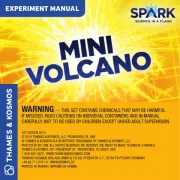
6 Augustus 2025
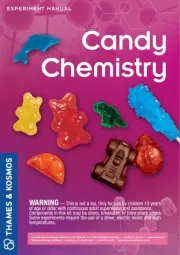
6 Augustus 2025
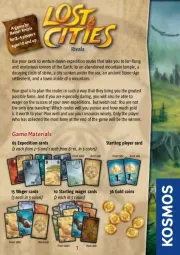
6 Augustus 2025

5 Augustus 2025
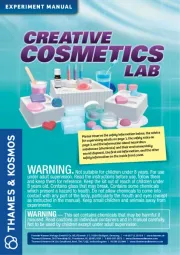
5 Augustus 2025
Handleiding Niet gecategoriseerd
- Generac
- Grasslin
- Hooker
- Tudor
- Husky
- Crestron
- Infortrend
- HiLook
- ZZ-2
- Maturmeat
- Xaphoon
- Hobart
- Tor Rey
- Inter-Tech
- Gen Energy
Nieuwste handleidingen voor Niet gecategoriseerd
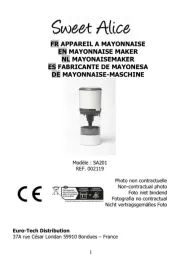
15 September 2025
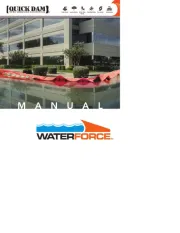
15 September 2025
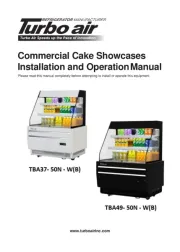
15 September 2025
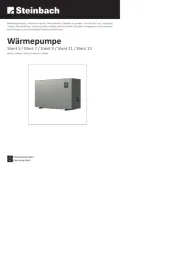
15 September 2025
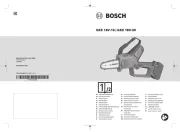
15 September 2025
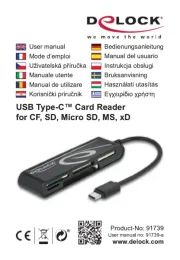
15 September 2025
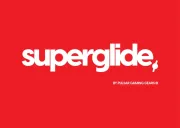
15 September 2025
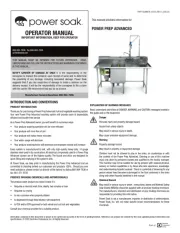
15 September 2025
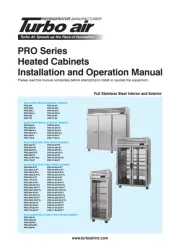
15 September 2025
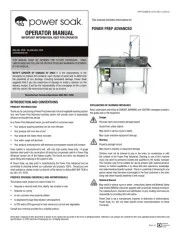
15 September 2025
